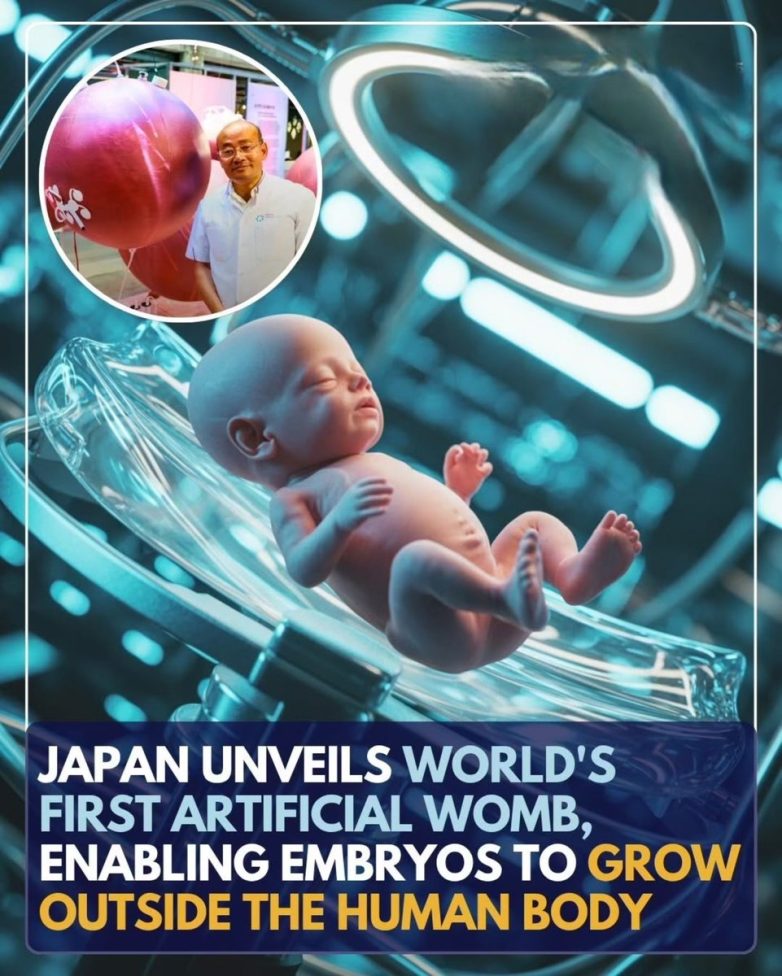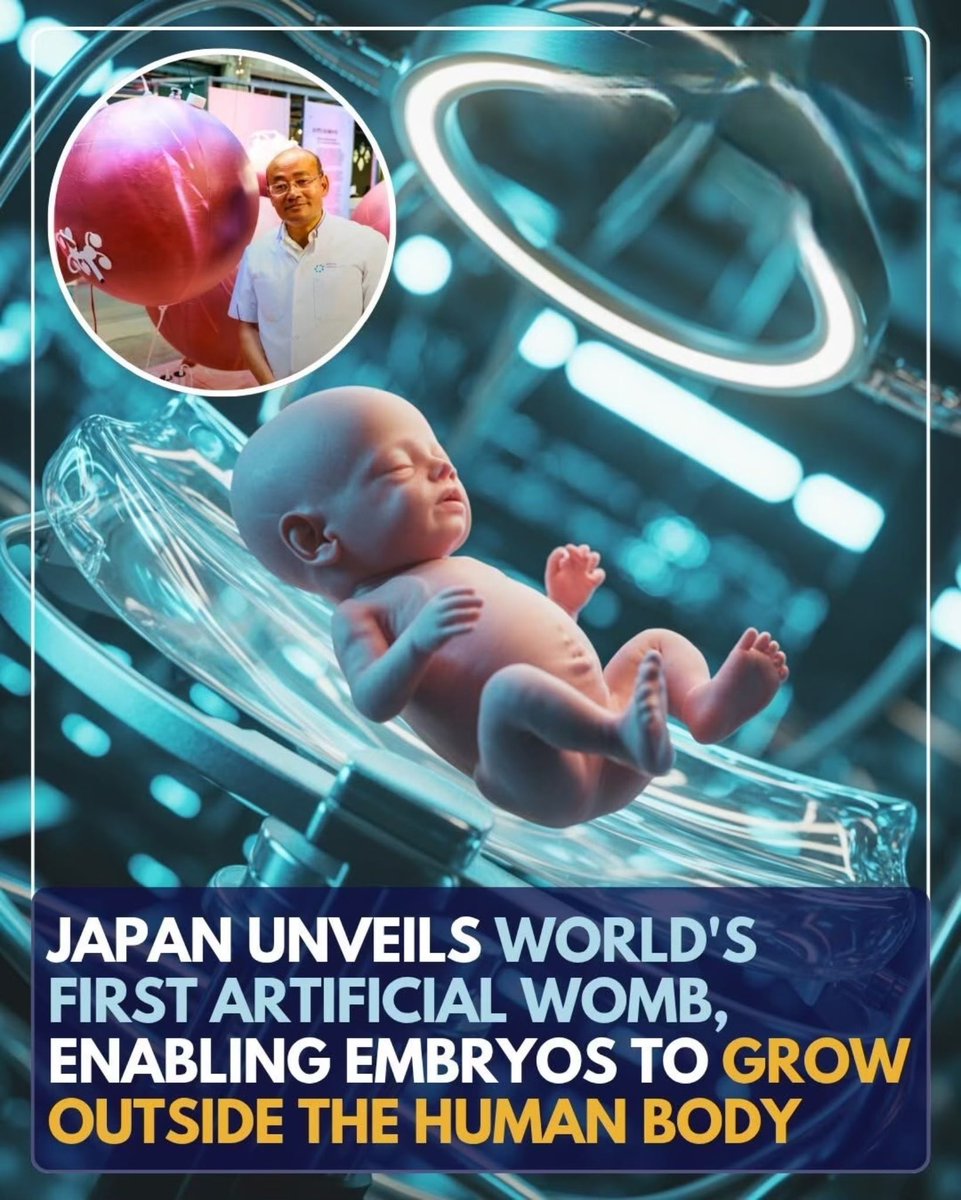
“Is Japan’s Artificial Womb the Future of Motherhood?”
artificial womb technology, embryonic development innovation, external gestation advancements
Japan Unveils World’s First Fully Functional Artificial Womb: A Breakthrough in Reproductive Technology
In a groundbreaking development that seems to leap straight from the pages of science fiction, Japan has officially introduced the world’s first fully functional artificial womb. This revolutionary technology marks a significant milestone in reproductive science, allowing embryos to grow completely outside the human body. By closely mimicking the natural conditions found within a biological womb, this innovative device has the potential to reshape how we understand reproduction, fertility, and even the future of human development.
The Science Behind the Artificial Womb
At its core, the artificial womb operates on principles of bioengineering and advanced medical technology. Designed to replicate the key environmental factors necessary for embryonic growth, such as temperature, oxygen levels, and nutrient supply, the womb provides a nurturing space for developing embryos. This artificial environment not only supports the growth of embryos but also helps to monitor their development in real-time, offering insights into their health and viability.
The artificial womb’s design is based on a combination of biocompatible materials and advanced sensors, creating a system that closely resembles the conditions of a natural womb. This includes the ability to regulate fluid levels, simulate amniotic fluid, and ensure proper circulation of nutrients and oxygen. As a result, scientists can cultivate embryos in a controlled setting, reducing the risks associated with premature births and other complications tied to traditional gestation.
Implications for Fertility Treatments
The introduction of the artificial womb holds tremendous promise for couples facing fertility challenges. For many, traditional methods of conception, such as in vitro fertilization (IVF), can be fraught with emotional and physical hurdles. In cases where embryos fail to implant successfully, the artificial womb could provide a new avenue for hope. By allowing embryos to develop in an optimal environment, the chances of successful implantation and healthy development may significantly increase.
Moreover, this technology could offer solutions for individuals who are unable to carry a pregnancy due to medical conditions, advanced age, or other factors. The ability to gestate embryos outside of the human body could empower countless individuals and couples to realize their dreams of parenthood, paving the way for more inclusive family-building options.
Ethical Considerations and Concerns
As with any groundbreaking technology, the unveiling of the artificial womb raises important ethical considerations. Discussions surrounding the implications of such advancements in reproductive technology are crucial as society navigates the potential consequences. Questions about the moral status of embryos, the risks of commodification of reproduction, and concerns over genetic manipulation are all factors that need thorough exploration.
Regulatory bodies and ethicists will play a vital role in establishing guidelines that ensure the responsible development and application of this technology. It is essential to create a framework that protects both the individuals involved and the embryos, ensuring that advancements in reproductive science align with societal values and ethical standards.
The Future of Reproductive Technology
The introduction of Japan’s artificial womb is not just a significant milestone for the country; it represents a turning point in the global landscape of reproductive technology. As scientists continue to refine and develop this groundbreaking device, the potential applications could extend far beyond fertility treatments. Research into artificial wombs could lead to advancements in neonatal care for premature infants, providing them with a stable environment to grow and thrive.
Additionally, the artificial womb may open doors to discussions about reproductive rights and choices, challenging traditional notions of parenthood and gestation. As society adapts to these technological advancements, new legal and societal frameworks will need to emerge to address the complexities that arise.
Conclusion: A New Era of Reproductive Possibilities
Japan’s unveiling of the world’s first fully functional artificial womb signifies a new era in reproductive technology that could change the way we approach conception, pregnancy, and childbirth. With its potential to support fertility treatments and empower individuals facing reproductive challenges, this innovation could have far-reaching impacts on family-building options.
While the ethical considerations surrounding artificial wombs are complex and multifaceted, ongoing discussions will be essential to ensure that the technology is developed responsibly and equitably. As we stand on the brink of this new frontier in reproductive science, the possibilities are vast, and the future of human development may be forever altered.
In summary, the artificial womb not only represents a remarkable technological achievement but also invites us to contemplate the profound implications it may have on our understanding of life, reproduction, and the very essence of family. As we embrace these advancements, it is crucial to navigate this uncharted territory thoughtfully and ethically, ensuring that the benefits are accessible to all.

Japan has just unveiled the world’s first fully functional artificial womb, a breakthrough that’s straight out of science fiction.
This incredible technology allows embryos to grow completely outside the human body, mimicking the natural conditions of a womb with amazing… pic.twitter.com/1j2ZkQWoue
— Truth X (@MinhNguyen2903) June 8, 2025
Japan Unveils the World’s First Fully Functional Artificial Womb
In a groundbreaking announcement, Japan has just unveiled the world’s first fully functional artificial womb, a technological marvel that’s straight out of science fiction. This incredible innovation allows embryos to grow completely outside the human body while mimicking the natural conditions found within a womb. So, what exactly does this mean for the future of reproductive technology? Let’s dive deep into this amazing breakthrough!
What Is an Artificial Womb?
An artificial womb, also known as an ectogenesis device, is a technology designed to replicate the conditions of a biological womb. This means it can support the development of a fetus from conception through to birth, all without the need for a human body. Imagine a high-tech incubator that not only keeps the embryo safe but also provides the necessary nutrients, oxygen, and environment for it to thrive just like it would inside a natural womb.
How Does This Technology Work?
The artificial womb operates using advanced technologies that include bioreactors and systems for monitoring and providing optimal conditions for embryo development. Here’s how it works:
- Nourishment: The artificial womb supplies nutrients and oxygen to the embryo through a specialized fluid, closely mimicking amniotic fluid.
- Temperature Control: The device maintains a stable temperature, akin to that of a typical human body, ensuring the embryo remains in a safe environment.
- Waste Removal: Just like a natural womb, the artificial womb has systems in place to remove waste products, keeping the developing embryo healthy.
This technology is not just theoretical; it has been tested and refined through extensive research and experimentation in laboratories. The unveiling in Japan marks a significant leap forward in its practical application.
Why Is This Breakthrough Important?
The implications of having a fully functional artificial womb are vast and varied. Here are a few reasons why this breakthrough is so important:
- Addressing Infertility: Infertility affects millions of people around the world. With an artificial womb, couples who struggle to conceive might have new options to explore.
- Premature Births: This technology could drastically reduce the risks associated with premature births, as embryos can be nurtured in a controlled environment until they are fully developed.
- Surrogacy Alternatives: The artificial womb could provide a new avenue for gestational surrogacy, offering an option for those who wish to have children but cannot carry them to term.
Ethical Considerations
With great power comes great responsibility, right? The introduction of artificial wombs raises several ethical questions that society must grapple with. Here are some of the concerns:
- Parental Rights: Who holds the rights to the embryo? The biological parents, or the creators of the womb itself?
- Accessibility: Will this technology be accessible to everyone, or will it be limited to those who can afford it?
- Potential for Misuse: How do we ensure this technology isn’t used for unethical purposes, such as designer babies?
These questions highlight the need for clear regulations and ethical guidelines as we move forward with this new technology.
The Science Behind the Breakthrough
Japan’s artificial womb is not a sudden occurrence; it’s the result of years of scientific research and technological advancements. Scientists have been working on similar concepts for decades, exploring the possibilities of ectogenesis. The recent developments in stem cell research, tissue engineering, and robotics have all played significant roles in making this dream a reality.
Researchers have used various models, including animal testing, to refine the technology and ensure it can support developing embryos effectively. The success in these experiments has paved the way for human applications, leading to the recent announcement.
Public Reception and Future Prospects
The public reaction to this groundbreaking technology has been mixed. Many people are excited about the potential benefits, while others express concerns about the ethical ramifications. As with any technological advancement, there will be a period of adjustment as society comes to terms with what this means for the future of human reproduction.
Experts believe that if successful, the artificial womb could revolutionize reproductive health and offer solutions to many of the challenges faced by modern families. However, it’s essential for ongoing discussions about the ethical implications to take place as this technology develops further.
Potential Applications Beyond Human Reproduction
Interestingly, the applications of artificial womb technology could extend beyond human reproduction. Here are a few possibilities:
- Animal Breeding: The technology could be used in animal husbandry, allowing for more controlled breeding practices and potentially increasing the health of livestock.
- Endangered Species Conservation: Artificial wombs could help in the conservation of endangered species by allowing scientists to nurture embryos of species that are at risk of extinction.
- Research and Development: This technology could serve as a valuable research tool, enabling scientists to study early human development in a controlled environment.
As we can see, the potential applications of artificial wombs are vast and varied, opening doors to possibilities we haven’t even begun to explore.
The Road Ahead: Challenges and Considerations
While the unveiling of the artificial womb is a monumental step forward, there are still significant challenges to overcome. Here are some considerations:
- Safety and Efficacy: Ensuring that this technology is safe for use and effective in supporting healthy embryo development is paramount.
- Regulatory Framework: Governments and regulatory bodies will need to establish guidelines and laws to oversee the use of artificial womb technology.
- Public Education: Educating the public about the technology, its benefits, and its risks will be crucial to fostering acceptance and understanding.
As we move into this uncharted territory, collaboration between scientists, ethicists, policymakers, and the public will be essential to navigate the complexities of artificial womb technology.
Conclusion: A New Era in Reproductive Technology
Japan’s unveiling of the world’s first fully functional artificial womb marks a significant milestone in reproductive technology. The potential to assist those struggling with infertility, reduce risks associated with premature births, and provide new avenues for family planning is nothing short of revolutionary.
However, as we stand on the brink of this new era, it’s crucial to address the ethical concerns and challenges that come with such a powerful technology. The discussions and decisions made in the coming years will shape the future of human reproduction and the role of technology in our lives. As we embrace these advancements, let’s ensure they are used to enhance lives and promote well-being for all.
Japan has just unveiled the world’s first fully functional artificial womb, a breakthrough that’s straight out of science fiction. This incredible technology allows embryos to grow completely outside the human body, mimicking the natural conditions of a womb with amazing